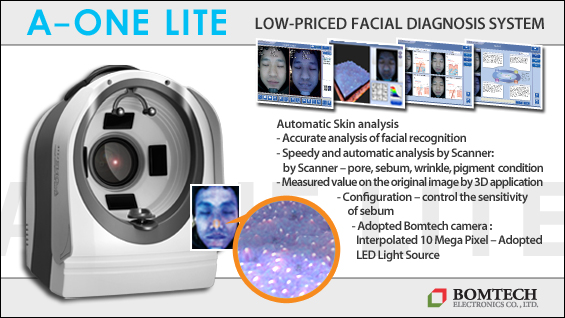
Marking and procedure
Temple is one of the most frequently involved areas in lifting procedures. In the past, nonabsorbable suture materials were used for a drastic lift but the recent trends favor lightly anchoring an absorbable PDO thread onto the deep temporalis fascia for eye lift. Let’s take a closer look at this method.
Have the patient in a sitting position, pull the possible external entry points with fingers to predict the outcome. Draw a line connecting to the eye area and make a marking for a 6 cm cog thread. Use a ruler. Make markings to show the order of the steps of the procedure.
After marking, anesthetize entry points. Using a 23G needle, puncture and inject 1-2cc of tumescent solution along each line. Use about 5cc or less per side. Some patients complain that their face appears larger if you use an excess amount of tumescent solution.
[Advertisement] A-One LITE(Facial Diagnosys System) – Manufacturer: BOMTECH(www.bomtech.net)
Wait 5-10 minutes for anesthesia to take effect and place three 6cm 21G cog threads from the top. The depth should be at the level of the deep temporal fascia and try to place the sutures at a relatively deeper layer toward the cheekbone. Practice caution to avoid the nerve and vascular passage. The thread can only withstand a certain level of tension and try to maintain the pull of the thread to the level that the thread does not push down the skin in a groove. Direct the suture materials inferiorly in a patient with pronounced cheekbones to avoid enlarging the zygomatic arch. Banding may help reduce post-treatment edema but caution is advised as this could negatively affect the skin. A follow-up correction one month later can increase patient satisfaction.
As explained above, the temple area can be corrected using materials including the dermal filler, botulinum toxin, and suture materials. The procedure uses simple techniques but the key thing to remember is to understand the patient’s needs and conditions and plan the treatment after thorough consultation.
.jpg)
Figure 2. After marking, anesthetize entry points. Using a 23G needle, puncture and inject 1-2cc of tumescent solution along each line. Use about 5cc or less per side.
-To be continued




















